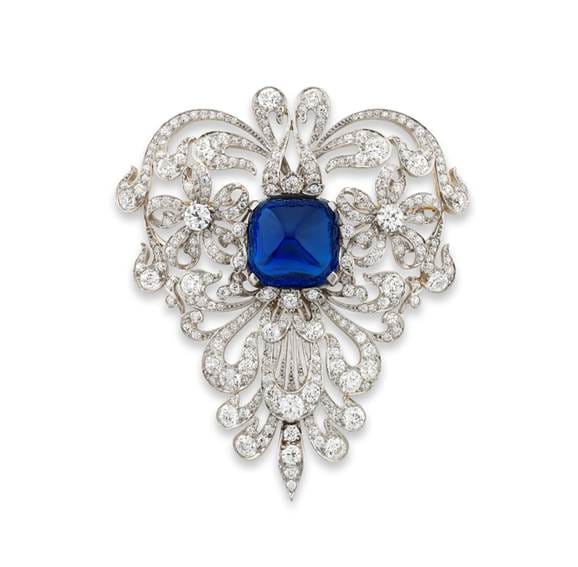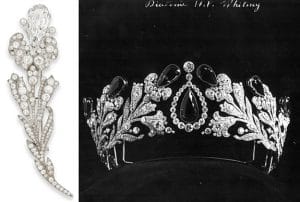Phillips to Auction Vanderbilt Family Jewels, Icons of Gilded Age Opulence
The Phillips auction featuring the vanderbilt family jewels offers a rare, glittering window into a bygone era of American royalty. On November 10, at the Geneva Jewels Auction: V, Phillips Auction House will present a magnificent collection of twelve pieces once owned by Gladys Moore Vanderbilt, Countess Széchényi. These are tangible relics of the Gilded Age, embodying the seismic shift in power that saw American industrial fortunes merge with European titled aristocracy. The provenance from the Vanderbilt dynasty elevates their desirability far beyond their intrinsic value, making the auction a landmark event.

The Gilded Age Dynasty: Context for Unrivaled Opulence
To understand the sheer historical weight of the vanderbilt family jewels, one must grasp the colossal scale of the dynasty that commissioned them. The fortune began with Cornelius “Commodore” Vanderbilt (shipping and railroads). By the Gilded Age, the Vanderbilts were the wealthiest family in America.
This wealth was broadcast through palatial homes, including The Breakers in Newport, Rhode Island. Built for Cornelius Vanderbilt II (Gladys’ father), the 70-room palazzo was a monument to uninhibited luxury, providing the backdrop for these jewels, which were designed as necessary badges of rank in the new American aristocracy.
Gladys Vanderbilt: An Heiress Bridging Continents
The collection’s original owner, Gladys Moore Vanderbilt (1886–1965), represented the final generation of American heiresses whose marriages cemented transatlantic alliances. In 1908, Gladys married Count László Széchényi of Hungary. This union married American industrial money with the prestige of ancient European nobility.
As Countess Széchényi, Gladys moved seamlessly between Newport society and the glittering courts of Europe. The pieces in the Phillips collection, including the magnificent tiara fragment and the sapphire brooch, were worn during these moments, acting as visible proof of the wealth and status she carried.

The Star Lot: The Unrivaled Vanderbilt Sapphire
The undisputed highlight of the vanderbilt family jewels is The Vanderbilt Sapphire, an Exceptional 42.68-carat sugarloaf Kashmir sapphire and diamond brooch by Tiffany & Co. It is estimated at $1 to $1.5 million.
The Legend of Kashmir
What makes this sapphire so coveted lies in its origin: Kashmir. Kashmir sapphires are considered the King of the sapphire world due to their unique qualities and legendary scarcity.
- Rarity and History: The original Kashmir mines were only actively worked for a brief window between the 1880s and early 1900s before being largely exhausted.
- The “Velvety” Hue: Like the finest examples from the region, The Vanderbilt Sapphire exhibits the famous “cornflower blue” or “Royal Blue” hue with a signature “velvety” or “sleepy” quality. This phenomenon, caused by minute inclusions, gives the stone a luminous, soft glow unmatched by sapphires from other origins.
- The Sugarloaf Cut: This cut maximizes the intense, velvety depth of a high-quality sapphire.
Cartier’s Ingenuity: The Transformable Tiara Fragment

Alongside the Tiffany & Co. sapphire, the collection features a masterpiece from Cartier: a Diamond Brooch (estimated at $100,000 to $150,000) that is a surviving fragment of Gladys’ elaborate wedding tiara.
Belle Époque Versatility
Commissioned for Gladys’ 1908 wedding, the original piece was a prime example of the Belle Époque style, defined by light, femininity, and versatility. The tiara was designed to be “transformable,” allowing Gladys to swap stones and disassemble it into a series of brooches or a necklace. This ingenuity allowed the great jewelry houses to create versatile pieces that reflected the social demands of the era. The surviving brooch, centered on a 4.55-carat pear-shaped, old-cut diamond, embodies the pinnacle of Cartier’s design during this golden age.
More Than Gems: Provenance, History, and The Full Collection
The remaining pieces in the vanderbilt family jewels collection paint a deeper, more personal portrait of Gladys’ life and the aesthetics of her time.
The Intimate Treasures
The complete collection of twelve lots includes smaller pieces that demonstrate how Gilded Age opulence extended to the most personal accessories:
- Cartier Gold, Ruby and Diamond Vanity Case: Bearing Gladys’ personal monogram, this small object was an essential accessory for a society woman, turning an everyday item into a miniature work of art.
- Diamond Comb: A delicate, early 20th-century piece used for the intricate hairstyles of the period.
- Cartier Traveling Clock and Wristwatch: Underscoring the family’s extensive patronage of the great French Maison.
The Power of Provenance
The value of these pieces is dramatically amplified by their provenance. As Benoît Repellin, Phillips’ Worldwide Head of Jewellery, stated, the collection “stands as the purest embodiment of Gilded Age elegance.” Bidders are not just acquiring a 42-carat Kashmir sapphire; they are acquiring a piece that was worn by the daughter of a man who commanded the American railroad system, a jewel that saw the pomp of New York’s high society and the courts of Europe.
Phillips’ Geneva Stage: A Global Auction Event
The decision to feature this collection as the leading highlight of The Geneva Jewels Auction: V on November 10 speaks volumes about its significance. Following a global tour (Hong Kong, New York, Singapore, Taipei, London), the auction will serve as a worldwide stage. The market shows a high appetite for period jewels with prestigious provenance, and the vanderbilt family jewels tick every box, ensuring a bidding frenzy worthy of their legendary status.
